Roll out the
Common Core with effective and affordable STEPS professional development training! This unique vertical alignment of K-12 Math and English Language Arts is offered both virtually and on-site. 
Please contact Dr. David Silverberg for details dave@STEPS4teachers.com
|
CEI- Pensarus Promotion continues through October 6.
CEI-Pensarus is currently offering a 30% discount on initial workshops or technical assistance.
Contact Christine Mason @ cmason@edimprovement.org, 571-213-3192 for additional information or visit www.edimprovement.org
to view our course catalog. CEI continues to expand its course offerings and approaches. This newsletter discusses our theories of learning and recommendations for the Common Core. We are establishing a data base of exercises that support our recommendations for instruction, and CEI is also available to conduct workshops on these topics, including our Heart-Centered Curriculum Approach. All of our workshops are hands-on and practical. Each includes immediate take-aways for classroom teachers. Technical Assistance for Administrators
CEI is partnering with others, including Pensarus, Inc., to offer strategies for data monitoring and also to provide technical assistance in support of your implementation of the Common Core, your school improvement initiatives, and general improvement in teaching. NOTE: The CEI website is undergoing revision. If you do not find what you need (including information on our workshops, our mission statement, and our blog) contact Dr. Mason directly or check back soon! |
|
|
Editor: Carolyn Lieberg, M.A.W.
|
|
Contact Information
Contact our Executive Director, Dr. Christine Mason.
Email: cmason@edimprovement.org
Phone: (571) 213-3192
* The rest of the story about Suzan Mullane's student: "The young Columbia University man was emotionally touched by a gifted student who happened to be twice exceptional, struggled to tell his story in front of the entire class on why talking was so hard for him and to please not think of him as "stuck-up" because he didn't converse with others. The whole classroom was riveted. There was complete empathy and compassion. My CY student is from Nigeria and guess what he wants to study: cures for illnesses." Ms. Mullane is certain that his experiences in school were the genesis for his goals.
To be removed from this email list please send an email with the header
REMOVE to:
info@edimprovement.org
|
|
|
| Greetings!
Welcome! This issue of Wow! Ed includes four related components for not only wowing students, but also increasing the efficacy and efficiency of learning in classrooms. Not your typical "Back to School Newsletter," CEI is mindful of the need in the beginning of the year to set the stage for what's to come in your schools and classrooms. This year CEI has chosen to focus on the Common Core and its implications for instruction. Also mindful of teachers' preferences to learn about their own academic areas, we have intentionally provided examples for history, English, and science.
- The article on Using the 4+ C's takes the reader to some of the issues that CEI is considering for the future of education, while still helping educators prep for the Common Core. It serves as a frame for integrating components of character education into everyday classroom activities; it provides an example of how to apply these concepts in a history lesson.
 Safia Adem mourns the death of her son Hamza Ali Faysal, 3, in a camp of displaced Somalis within the rubble of the Cathedral of Mogadishu on August 13, 2011 in Mogadishu, Somalia. The malnourished child died of sickness two weeks after fleeing with his family from famine and drought in far southern Somalia. http://lightbox.time.com/2011/08/18/somalia-one-mothers-unspeakable-loss - Suzan Mullane in her article on Frankenstein describes an approach that builds on one of the 4+ Cs: compassion, while also incorporating STEM into a high school literature unit.
- Samadara Jayarathne, in describing bioluminescence (scroll down for the "magical" photo), provides an example of wowing! students through an inquiry discussion while still providing background on atoms, electrons, and protons.
- Carolyn Lieberg takes on a more technical subject, "spacing instruction." We have intentionally selected this topic because of the curriculum mapping that is occurring as teachers prepare to implement the Common Core Standards.
With the onset of new and more rigorous standards, there is a natural tendency to "tighten" instruction in a way that is similar to tightening screws. With this tightening and curriculum compacting, instructional timing and pacing is shifting. CEI is urging educators to step back and find ways to space instruction so that students will have time to reflect, ideas will have time to incubate, and students and educators will have time to reach some "aha's."
|
|
Using the 4+C's with the Common Core Curriculum
By Dr. Christine Mason
The Partnership for the 21st Century seems to have the right idea. Or at least a very good idea. As we teach students, let's focus not only on content learning, but also on creativity, collaboration, communication, and critical thinking. So, how will that work with the Common Core? The Partnership for the 21st Century has some ideas at its website (http://www.p21.org/), including a Common Core Toolkit. That toolkit gives examples of how to integrate the 4C's and technology with academic content.
At the Center for Educational Improvement (CEI) we have been researching trends with the Common Core and trying to find ways to accelerate learning AND make learning more meaningful for individual students. The Partnership for the 21st Century has laid some of the critical foundation. Their approach includes a global component, ways to make instruction more meaningful, and vignettes and examples of how to cover essential learning and the big ideas.
So why has CEI chosen to focus on 4+ Skills, rather than just 4? As we were reflecting, researching, and considering the pitfalls and problems of instruction today, we became more concerned about some concepts that are missing from many classroom activities. The omissions include instruction with a focus on: compassion, courage, confidence, and consciousness (or being aware). Our thinking is inspired by eastern philosophers such as Osho and Krishnamurti, as well as scientists such as Einstein, and leaders such as Martin Luther King.

Osho
Over the next few months, CEI will be providing a variety of examples to schools on how to essentially do more with less or how to cover more content in less time, through a focus on the 4+ Skills. We present one brief example below for your consideration.
Covering Several Standards with One Lesson. At the 4th grade level, there are several Common Core standards that relate to drawing inferences from text, explaining events, writing clearly about a topic, developing a topic with concrete details and facts, following agreed upon rules in class discussions, engaging in collaborative discussions, conducting short research projects, and supporting their analysis, reflection, and research. In fact, in reviewing the standards , CEI noted 10 standards that could be related to the following activity. This activity comes from school.discoveryeducation.com/lessonplans. Although this could be an extended activity with many more steps, we have summarized three main steps:
- Review stories about Paul Revere and the Minutemen, George Washington and the Continental Army, and Thomas Jefferson and the Declaration of Independence.
- Discuss leadership qualities, traits or characteristics and make a chart to compare and contrast traits for each. Students can conduct research and discuss when or how they showed the leadership qualities.
- Students then write a paragraph or two based on their analysis.
LEADERSHIP QUALITIES

From the 4 C's, come the skills of critical thinking, collaborating and communicating in groups. From CEI's 4+ C's come an additional four: courage, confidence, compassion, and consciousness. By adding the four additional C's, students are taught to reflect on how leaders exhibit these traits. If these skills are practiced frequently, youth will be encouraged and taught to show compassion for their peers and others, to be courageous, to have confidence in their skills and abilities, and to be conscious of the impact of their words and deeds. (Each of these can be expanded through multiple lessons). Classrooms as Knowledge and Learning Centers. Research supports CEI's attention to spaced, distributed practice (see article below). We are convinced that the best ideas will emerge from students as they are given opportunities to reflect and revise their statements so that classrooms become "Knowledge and Learning" centers for continual growth. More later.... |
|
 | Rigor, Relevance, Compassion, and STEM
by Suzan Mullane, M. Ed., Anchorage, Alaska |
Robert Kipling once said: "He who can reach a child's heart can reach the world's heart." But is there time to address compassion and tolerance in teachers' daily lessons given the time pressure of our Common Core culture and pressure to make AYP? Consider, for instance, classical literature: the stories that some students hate to read because they are not relevant to their lives. The stories students may roll their eyes at and demand a differentiated assignment because: "These letters are just a bunch of nonsense" or "I don't understand this fancy Old English dialogue!"  Mary Shelley's Frankenstein, often required high school reading, is a case in point. Some of us may be so familiar with the movie versions that we may have forgotten how difficult the actual text is. Read the excerpt below and consider how different this manner of speaking is from our language and texting today: I saw--with shut eyes, but acute mental vision--I saw the pale student of unhallowed arts kneeling beside the thing he had put together. I saw the hideous phantasm of a man stretched out, and then, on the working of some powerful engine, show signs of life and stir with an uneasy, half-vital motion. Frightful must it be, for supremely frightful would be the effect of any human endeavor to mock the stupendous mechanism of the Creator of the world. Captivating young minds to read complex and less familiar vocabulary and structures in Shelly's narrative can be tough. The trick is to establish effective questioning strategies to assist students in entering the mind of the "monster." There they will find a vulnerable, lonely creature that desperately seeks companionship and human understanding in a foreign world. But the creature's appearance and lack of language (he is not cool) creates isolation and ultimate tragedy. Suddenly, students can relate--compassionately--and see a theme! All teens have felt vulnerable and isolated at times, judged on appearance, class and intellect. Shelly's story is timeless, because it depicts the human condition, and kids can see the paradox in a vulnerable monster; they can project themselves into the monster and write amazing compassionate empathetic narratives while citing text. Frankenstein and STEM. Shelley's theme in Frankenstein also offers a launching point for cross-curriculum instruction on the ethics of genetic engineering, human cloning and embryonic stem cell therapy. Socratic seminar (for one example of an easy-to-follow approach to Socratic seminars, visit http://toolsfordifferentiation.pbworks.com/f/INSTRUCTIONS.pdf) is a perfect-pitch way for students to read critical contemporary nonfiction issues in medicine and law, while in turn practicing turn-taking and compassionate active listening skills, given divergent viewpoints in nonfiction literature. In Socratic seminars, students are provided a structure for critical thinking: analysis, prediction, and practical and ideological considerations of topics. 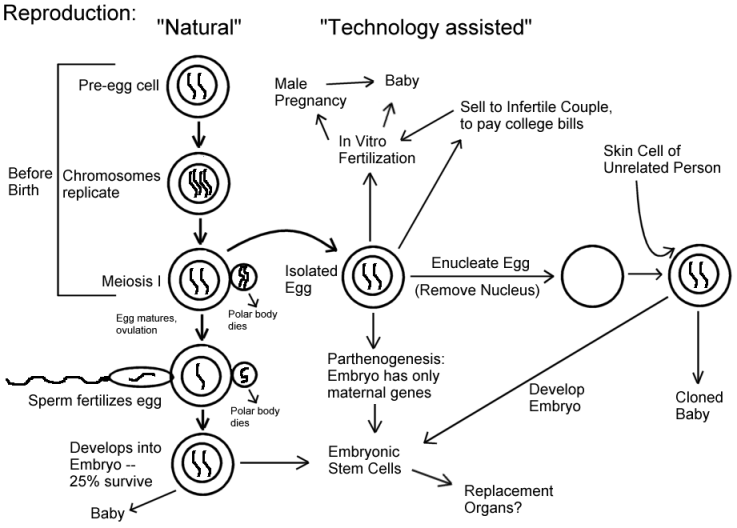 Today, educators are considering relevance, rigor, and relationships of their lessons in attempts to meet the standards of the Common Core and to provide instruction that leads to higher levels of thinking (Daggett, 2005). So is it meaningful to spend time teaching compassion through Frankenstein? Can teachers help students to reflect on compassion, while promoting analytical thinking in ways that are relevant to students' lives? Relevant? Yes! Rigorous? Yes! Memorable? Yes again! Here is a comment from a former 8th grade English student in his first year at Columbia University, an aspiring scientist. * (see more about him in the left-hand column) "Ms. Mullane, thank you for teaching me Frankenstein and the tough literature lessons in my 8th grade English class. I thought it was pretty difficult at the time, but your lessons really helped me in British Literature here at Columbia University. I thought you'd like to know that. Equally important, thank you for teaching me compassion for the handicapped. You were so gracious to my former classmates. I will never forget you." Daggett, W. (2005) Achieving Rigor, Relevance and Relationships. International Center for Leadership Excellence. (www.leaderedcom/pdf/academic_excellence.pdf) Reproduction chart: http://biology.kenyon.edu/courses/biol114/Chap14/clone.html |
Benefits for Students of "Spaced Learning" by Carolyn Lieberg, M.A.W. The saying about working smarter rather than longer, harder, or other such adjectives has been receiving more and more attention with regard to classroom teaching. The attention is paying off. 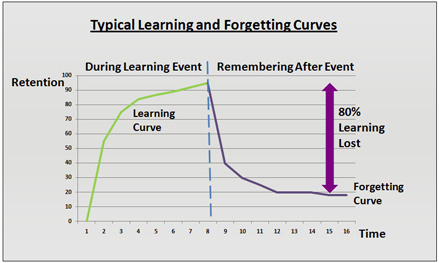 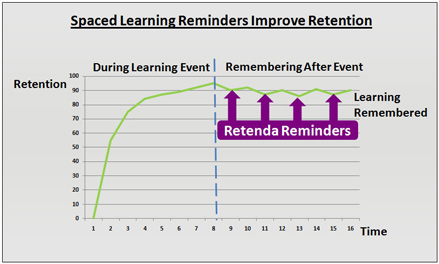
Researchers have been investigating how retention is affected by what is generally called "spaced learning." Using gaps of time between study sessions of material has been lauded since the 1970s (Bahrick, Bjork, Dempster), but the practice has not been widely introduced. Curriculum developers and textbook writers, for reasons of custom or ease, have rather massed together instruction on a topic and moved on. Psychology professor Doug Rohrer at the University of Florida claims that more knowledge is retained long-term when it is studied in smaller chunks over a longer period of time. Spreading out lessons and study time is found to have a positive effect on students of all ages. - Five-year-olds benefitted from phonics lessons that were spread over time (Seabrook, Brown, & Solity, 2005).
- Middle school students boosted their performance during a six-week program that both spaced out study sessions and included smaller tests along the way (Metcalfe, Kornell, & Son, 2007).
- Righth-grade students recalled more U.S. history material nine months later, when they had studied it in blocks of time that were spaced out.
Rohrer and Harold Pashler conducted a study that combines spaced learning activities with tests over the material. The researchers saw that students made more errors in the "short-term" tests, but that the pupils did better on the larger, later tests. Rohrer and Pashler describe the errors on the small tests as simply an aspect of constructing knowledge - enhancing learning and slowing the rate of forgetting -- and in fact the mistakes provided the opportunity for corrections in the learning, which led to improved performance on the larger summative exams. Some college instructors at the University of Iowa and elsewhere have begun calling small tests, "comprehensive checks," which shifts away the anxiety associated with tests and removes the aspect of judgment from an authority figure. Such "checks" could be self-administered and self-corrected. Adding physiological evidence to the findings, the Montreal Neurological Institute has pinned down information at the molecular level. When learning is massed together¸ the brain makes constant use of serotonin, which creates an enzyme that actually interferes with synapse linkage and blocks the creation of long-term memory (McGill, 2009). This topic will continue to be studied and broadcast, but in the meantime, teachers might make some use of the information by rearranging lessons and quizzes to best suit their students. Bahrick, H. P. (1979). Maintenance of knowledge: Questions about
memory we forgot to ask. Journal of Experimental Psychology: General, 108, 296-308. Bjork, R. A. (1979). Information-processing analysis of college teaching. Educational Psychologist, 14, 15-23. Dempster, F. N. (1988). The spacing effect: A case study in the failure to apply the results of psychological research. American Psychologist, 43, 627-634. McGill University (2009, October 2). Why one way of learning is better than another. ScienceDaily. Retrieved August 28, 2011, from http://www.sciencedaily.com/releases/2009/10/091001163730.htm Metcalfe, J., Kornell, N., & Son, L. K. (2007). A cognitive-science based programme to enhance study efficacy in a high and low-risk setting. European Journal of Cognitive Psychology, 19, 743-768. Rohrer, D. and Pashler, H. (2010 June/July) Recent research on human learning challenges conventional instructional strategies. Educational Researcher. (39, 5, 406-412) DOI: 10.3102/0013189X10374770 c/2010 AERA. Seabrook, R., Brown, G. D. A., & Solity, J. E. (2005). Distributed and massed practice: From laboratory to classroom. Applied Cognitive Psychology, 19, 107-122. |
 | Cool Science - Bioluminescence
by Samadara Jayathne, former Chemistry researcher and Chemistry/Math teacher, Washington, D.C. One way to motivate students to understand complex topics is to use an inquiry approach. Following are excerpts from a lesson by a high school science teacher who is introducing the topic of Bioluminescence. CEI has added notes to help make the approach explicit for your replication. 1)Start with interesting pictures. A Glowing Bay in Vieques, Puerto Rico, known for its bioluminescent sea animals, is well illustrated by the motions of this swimmer. 
(The above photo was taken by artist and photographer
Doug Myerscough in the Biobay in Vieques. ) 2)Ask questions that are relevant to the topics and the students while introducing vocabulary. 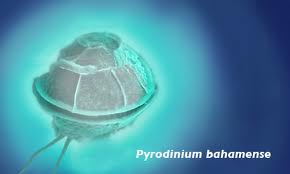
Have you ever seen glowing sea water at night time ? Did you ever wonder why some insects and plants emit light? (Discussion) Here is the secret -- however, understanding chemistry and biology makes it easier to understand these principles. - The ability of lighting to emit properties of the living organism is known as 'Bioluminescence'.
- All light-emitting property including bioluminescence is explained by the same process.
- To understand this process, let's consider other aspects of light.
We all love to watch fireworks at night. What spectacular colors and patterns! Did you know that this is due to the story of the electrons of the atoms in the elements? Discussion: If students can explain--let them lead the explanation. If not, here is what you can teach: 3)Add scientific explanations with diagrams. Atomic structure contains subatomic particles--electrons, proton and neutrons. Electrons move around the orbits within the certain order while all protons and neutrons stay in the middle of the atom, which is called the nucleus. 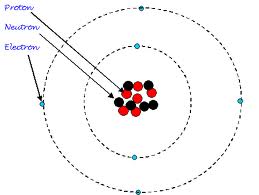
An electron orbiting the nucleus of an atom receives sufficient energy to jump to a higher energy orbital shell. What will happen to the extra energy? It releases as a "light" (photons) associated with heat loss. 4)Continue to ask questions--and use student answers to help lead the discussion. What do you think that light will look like? Most of the elements in the periodic table show their "flame test" results with bright yellow, purple, crimson red, apple green and magenta colors--the same way fireworks produce spectacular colors during the show. When the bioluminescence occurs in the living organisms, it is promoted through a chemical process and when the excited electrons fall back to lower level shells, extra energy releases as a "light" and no heat loss occurs. That's why this is called "cold light." 5)Talk about being a scientist and relate this back to the original questions, asking additional questions. Biochemists study the chemicals responsible for this reaction, which leads to a talk about Luciferins. 
 Firefly or Luciferin Different creatures produce different varieties of these chemicals resulting in different colors of light. Do you know what is the most common color produced by marine life? Guess what? It is blue, which is a natural evolutionary selection since blue penetrates farthest through water. 6)Keep showing visuals....(fireflies, sea, sea life). Bioluminescence has also evolved to hide the shape or silhouette of a creature against the light blue background of a sun-filtered sea. By shimmering with a bluish color, the animal becomes far less noticeable to predators passing above or below it, and it can more or less blend in with the backdrop of the surrounding water. Fungus, mushrooms, fireflies, beetles and worms produce bioluminescence on the land. Among the sea creatures, crustaceans (e.g., shrimp, ostracod), mollusks (e.g., squid, clams, limpets), coelenterates (e.g., jellyfish, sea pansies, hydroids), bony fish (e.g., hatchet fish, flashlight fish, pony fish), and cartilaginous fish (e.g., sharks) contain strong bioluminescent reactions which produces "cold light." Following this introduction, students can select organisms through which to study bioluminescence. There are options for internet research, examining slides, or conducting experiments. For example, flame tests with various elements can be done quite easily in most labs. The creatures who produce bioluminescence generally do so in their own environments, so if students are heading to such a location, they may be able to bring back photos! Read more: Bioluminescence - Chemistry Encyclopedia - reaction, molecule, Beetles/Fireflies, Dinoflagellates, Bacteriahttp://www.chemistryexplained.com/Ar-Bo/Bioluminescence.html#ixzz1WZ7KRKUa |
|
|
| ********************************************************************************
A Scientific Basis. Each of the approaches in this newsletter is supported by scientific evidence. CEI is also continuing to research the outcomes of the 4+ C's. A strong research base supports the values of most of these components (confidence, courage, compassion). Educators may be less familiar with the topic of "consciousness" -- something that is often translated as an awareness: awareness of oneself, the environment, and others. With this awareness comes an understanding that is often deeper, in that it incorporates compassion, empathy, and realization of the impact of our thoughts and deeds.
Awareness or consciousness is supported at the present by neuroscientific evidence of brain functioning (Hameroff, Kaszniak, & Laukes, 1998). This examines the interaction of input with memory and learning. In fact,Vygotsky (1925) who is widely cited in education for his concept of Zone of Proximal Learning describes consciousness as a "phenomenon that unifies attention, intention, memory, reasoning, and speech." While CEI has turned to eastern philosophers in examining consciousness, we are continuing to study the intersection of Eastern and Western theories and approaches to education and learning.
Hameroff, A. Kaszniak, J. Laukes, (1998) Toward a Science of Consciousness II: The second Tucson discussions and debates. Cambridge, MA: MIT Press.
Vygotsky, L. S. (1925/1982)
. Consciousness as a problem in the psychology of behaviour. In Collected Works: Questions of the Theory and History of Psychology. Moscow: Pedagogika.
Teachers and administrators - please help share these ideas with your colleagues. And let us know about your successes!
Sincerely,
Christine Mason
Center for Educational Improvement
www.edimprovement.org
|
|
|